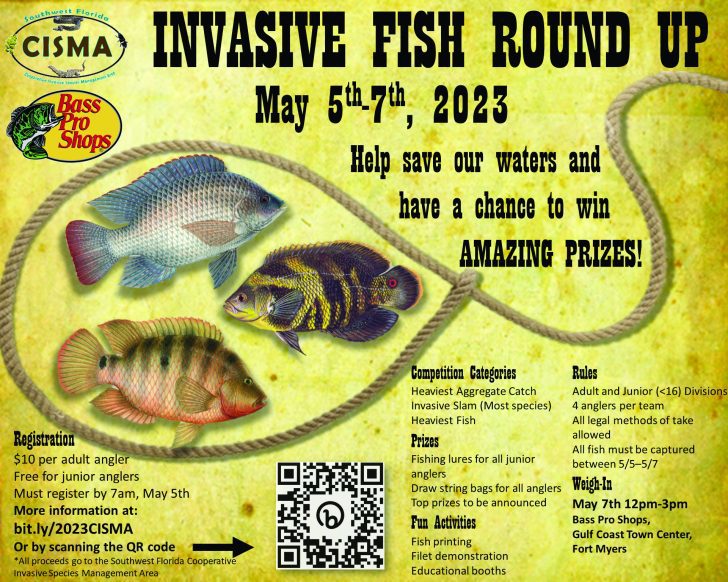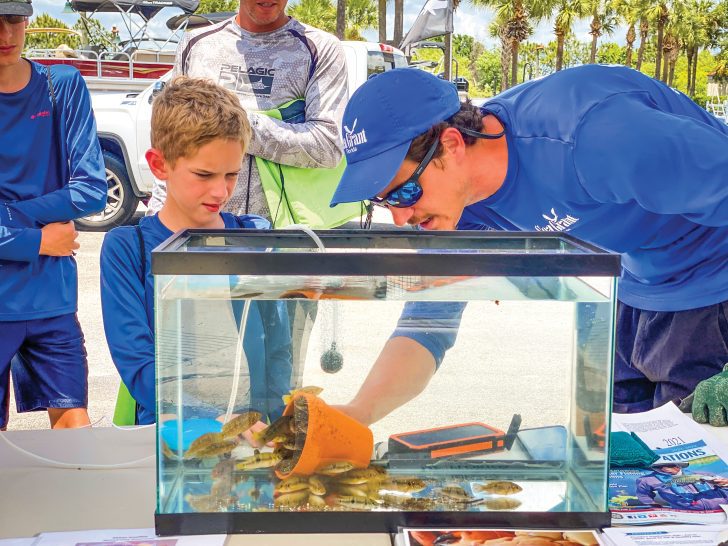By: Michael Sipos, UF IFAS Sea Grant Agent

But what is an invasive species? Why are they bad and how did they get here? There are plenty of terms you may have heard, which can be super confusing, and many have their own connotations that aren’t very helpful and can mean a multitude of things to folks.
Hearing the word “exotic” may sound alluring while “non-indigenous” may paint a negative picture in one’s mind but can be used to describe the same plant or animal. We should avoid using these unclear terms and get the terminology straight.
An invasive species is a nonnative organism that lives outside its geographic range, was introduced by people – whether intentionally or unintentionally – and can cause harm to the environment, economy or humans. If the organism is not from here and is not causing harm to those three pillars, it’s considered “nonnative.”
If its native to the area but has invasive characteristics, then it’s a “nuisance” organism. Many of these nonnative organisms pose little to no threat if managed and kept in captivity, but once they’re introduced to the environment, they can be a serious threat if they have become established. By “established,” we mean they have a self-sustaining, reproducing population without the need for human intervention.
The most effective and cost-efficient way to manage nonnatives is through education and preventing them from being introduced to the environment. Those actions should be followed by early detection, rapid response, reporting sightings to scientists using tools like the IveGot1 app so managers can be aware of, and remove, new invaders before they become established and become a real problem.

It’s essential to practice responsible pet ownership and not release any of your pets. It’s also best to avoid introducing aquatic plants or animals to new ecosystems and to make sure whatever you’re planting or importing is legal. The Florida Fish and Wildlife Conservation Commission even has Exotic Pet Amnesty Days to give pet owners the opportunity to surrender nonnative pets that they are no longer able to keep. So don’t let go of that turtle that’s getting too big for your tank or that pet fish that’s picking on its buddies.
Here’s something else you can do, particularly on the fishing side. If you’re an angler or you’re interested in learning about invasive freshwater fish, come check out the 2023 SWFL CISMA Invasive Fish Roundup weigh-in on Sunday, May 7. In this tournament, folks harvest invasive fish such as Mayan cichlids, tilapia, armored catfish and more to win prizes while reducing the impacts of these invaders on our local environment. The weigh-in portion will also include plenty of education and activities free to the public.
To learn more or to participate in the roundup, check out the event’s registration page at bit.ly/2023CISMA.
Michael Sipos is the Florida Sea Grant agent for UF/IFAS Extension Collier County. Contact him at sipos624@ufl.edu. For more fishy content and updates on upcoming educational programs, please check out linktr.ee/CollierSeaGrant for links to the Collier County Sea Grant Facebook page, YouTube Channel, Instagram listing, UF/IFAS blog and more!


